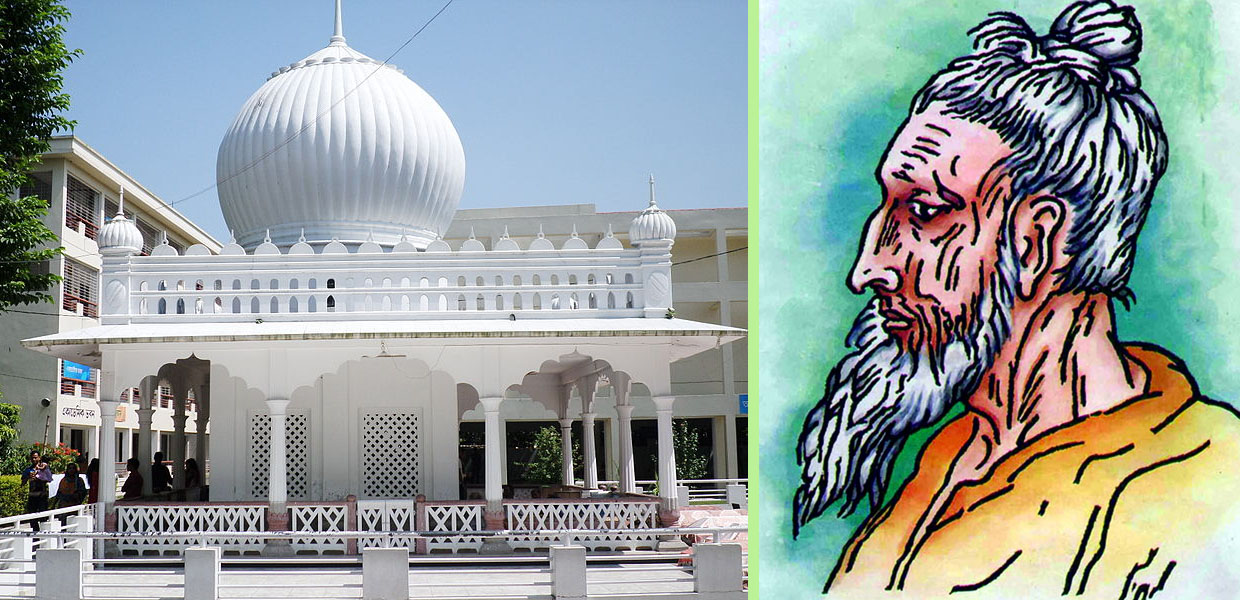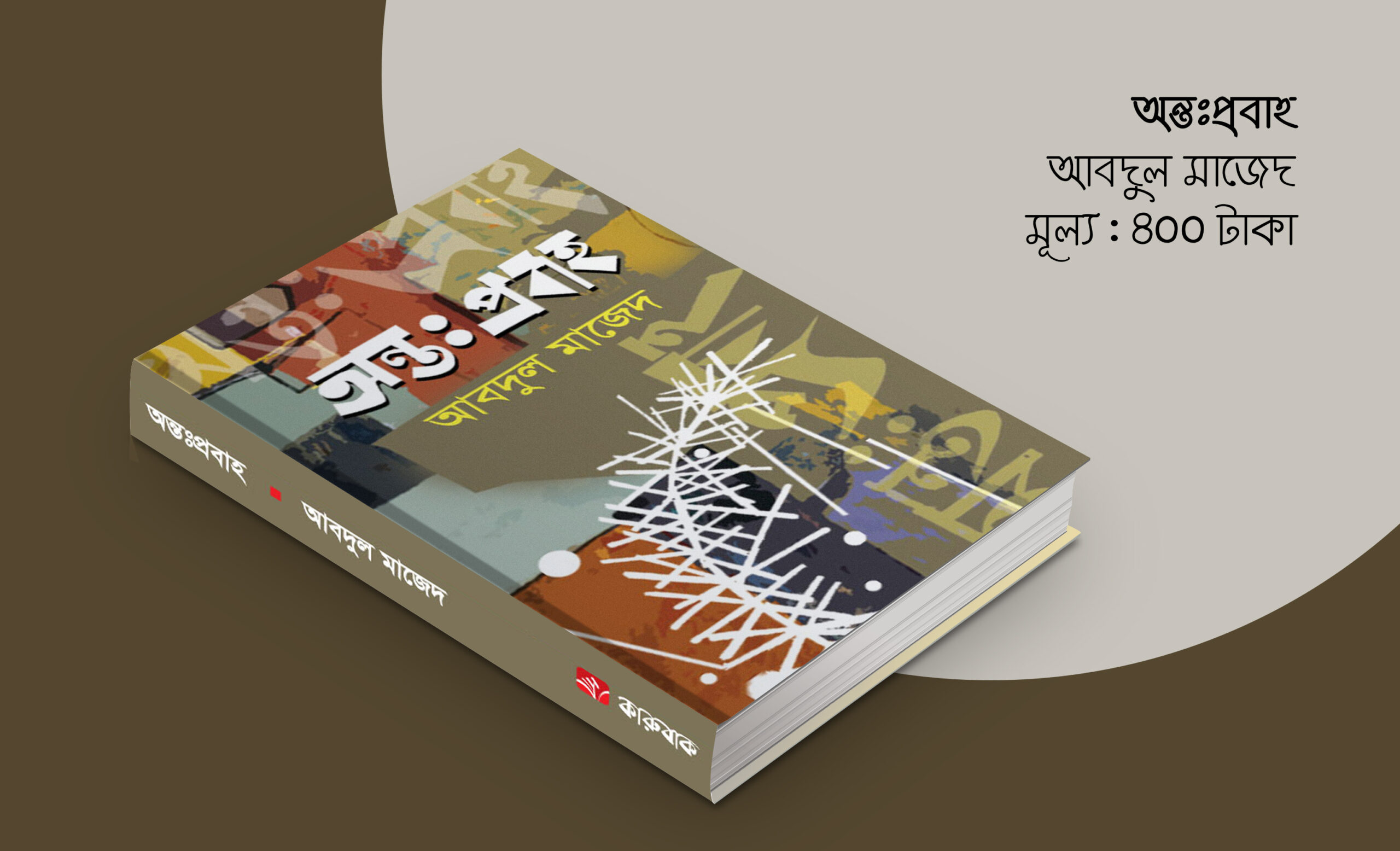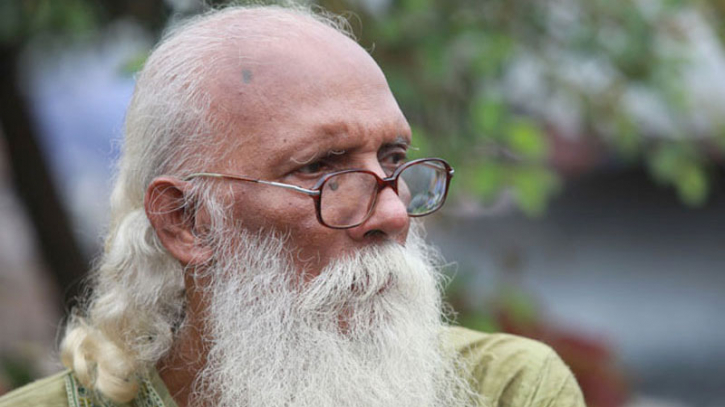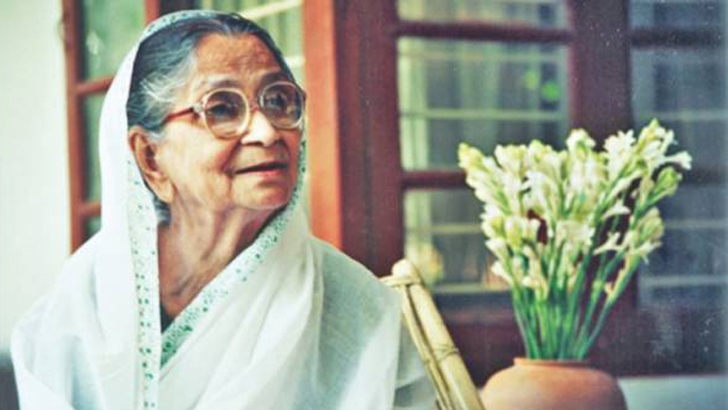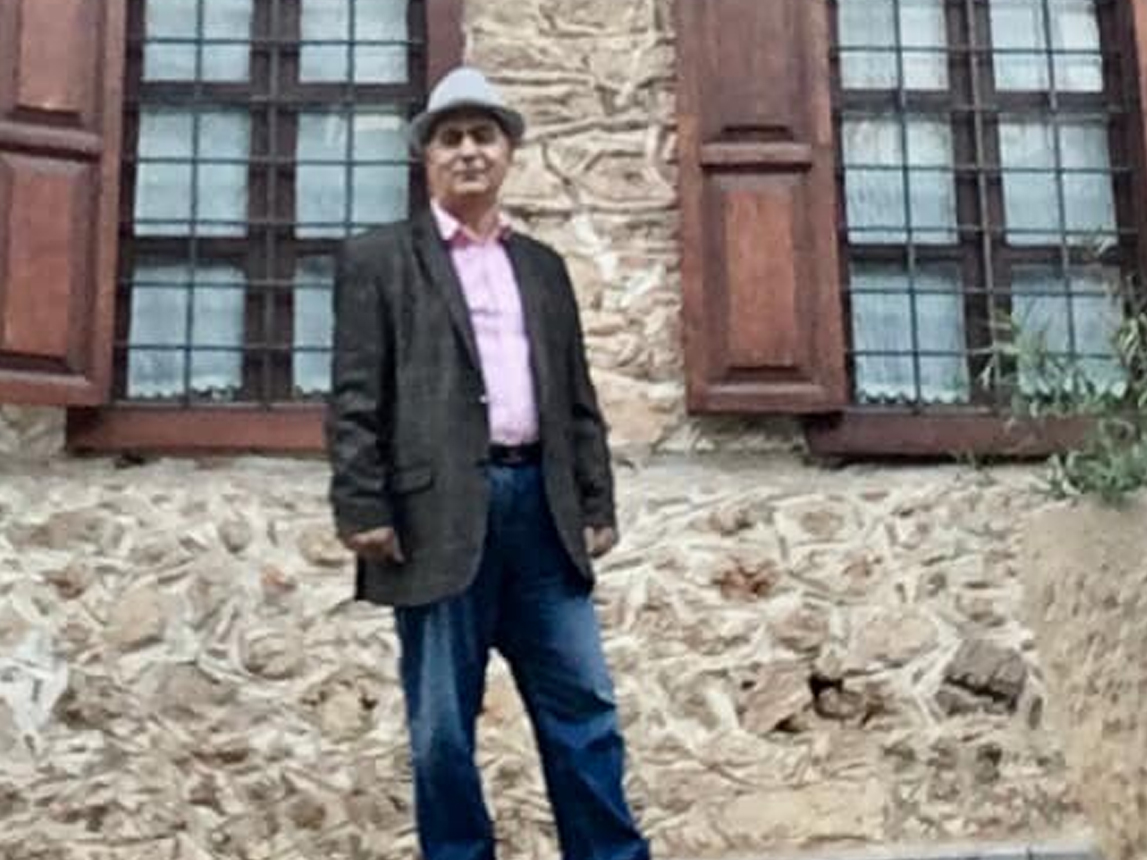Baul music is the most popular music of Bangladesh. It reflects a universal impulse of humanity. For the last 200 years or more this music has left a tremendous impact on the mind of the people for its mysticism. No other songs in Bangladesh have gained so much popularity as those of the Bauls of Bangladesh. It has caught the attention of the world for its mystic music and metaphysical approach to life. Rabindranath Tagore was also drawn towards their songs and he assimilated their ideas and also musical tunes for his ‘Gitanjali’ (Song Offerings) and when he read out at the residence of poet Rottenstine in England some of the verses which he translated into English before a selected gathering, the audience looked spell bound, and on hearing those verses, they left the place without uttering a single word or thanking the poet for his work. Rabindranath felt ashamed and was completely broken hearted. But the following day, he started receiving phone calls and letters in which the listeners stated that they were so much bewitched and bemused that they forgot to thank him. They told him that the songs were so unique and amazingly new that these were marvels. Never had they heard of these songs which contained a unique philosophy unknown to the modern world. Buddadev Basu, a leading poet of West Bengal, India narrated this story in his book,’ The Poet Rabindranath’. Rabindranath Tagore, in fact, admitted clearly in many of his writings that he had borrowed Baul tune in many of his songs. These have inspired other poet composers of Bangladesh to use Baul tune in their songs. Poet Nazrul Islam too was greatly influenced by the Bauls and composed songs with Baul tunes and themes. A good number of poets in Bangladesh and West Bengal, India have written poems with Baul themes. Songs of Bauls have been translated into English. Scholars from home and abroad study Bauls and their music both in Bangladesh and in India for university degree or for general interest. Mention may be made about Professor Edward C. Dimock (Jr) and many others for contribution to Baul philosophy. They include : Edward C.Dimock(Jr.), 1) “Rabindranath Tagore–The Greatest of the Bauls of Bengal”( 1975) Journal of the Asian Studies, University of Michigan, USA, 2) The Place of the Hidden Moon, Erotic Mysticism in the Vaishnava Sahajiya Cult of Bengal, Chicago: University of Chicago Press (1966), USA.; Charles Capwell, 1) The Esoteric Beliefs of the Bauls of Bengal, Journal of Asian Studies,1974; 2) “The Changing Role of the Bauls in Modern Bengal.” In Anthropology and Music: Essays in Honor of David P.Mc Allester. Detroit Monographs in Musicology,1974; Josef Kuckertz, “Origin and Construction of the Melodies in Baul songs of Bengal”, Yearbook of the International Folk Music Council, 1975, USA; Carol Salomon, “ A Contemporary Sahajiya Interpretation of the Bilvamangal-Cintamani Legend as Sung by Sonatan Das Baul” In Patterns of Change in Modern Bengal, edited by Richard L. Park, Michigan 1979,USA. June McDaniel, The Madness of the Saints, Esoteric Religion in Bengal, 1989, Chicago, USA. A number of scholars in Japan, Germany and France and elsewhere also worked on the Bauls. Besides, many scholars in Bangladesh and India also made in- depth study on the Bauls. Hopefully a detailed bibliography would be made available to the scholars in future.

Entrance to the Lalon Akhra at Seuria, Kushtia, Purna das Baul abd A Baul singer
Baul music was declared a Mastrpiece of Heritage of Humanity by UNESCO in Paris on November 2005. It is indeed a grat honor to the people of Bangladesh and Bengali speaking people all over the world. They ae now the heroes and great sons of the soil. Today the Baul music has influenced the modernmind tremendously. Scholars, film makers, cultural activists and music lovers of Baul so all over the world are now visiting Bangladesh and West Bengal, India in order to know their mystic way of life and their music. The Bauls and their music have become an icon of national pride and this tradition, its music, and its lyrics reflect ideals of cultural nationalism. The popular romantic imagination everywhere seeks expression through its chosen bards: The West have Bob Dylan and Leonard Cohen, the Indians have Amir Khashru and Kabir, the Pakistanis have Shah Abdul Latif Vit of Sind, while the Bengalis have Lalon Shah, Pagla Kanai and Shah Abdul Karim as Bauls.These wandering mystic minstrels carry with them the soul of Bangladesh.
UNESCO also provided fund for preservation of Baul songs to the Ministry of Culture, Government of Bangladesh and subsequently the Bangladesh Shilpakala Academy had undertaken a project with a view to collecting, preserving and promoting the original tune of the Baul songs. Initially Kushtia, a western district of Bangladesh bordering Nadia district of West Bengal, India was selected for study as Lalon Shah, the great Baul poet- saint( sadhaka) and performer of songs, lived and died in a village named Seuria under Kumerkhali Upozila in Kushtia district in 1890 and here he had a number of followers and disciples.
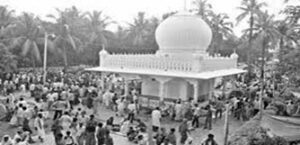
The Bauls of Bangladesh and their cultural emblem
The Bauls are a kind of popular religious mendicants or Fakir, both male and female and known for its iconoclasm, disregard of religious scriptures, caste and social formalities. They have, although, Muslim or Hindu names but actually they are neither Hindu nor Muslims. The Muslim Bauls claim that they are Chistiya Fakirs, that is, they are followers of Khawaja Muinuddin Chisti. But they do not perform any Islamic religious rites and rituals. They do not say five times prayer, or observer Ramadhan fasting, attend Juma or prayer or two Eids. Instead they have developed their own religious rites such as special kind of prayers. They take their women partner as Jainamaj or prayer mat. They say prayers in two times in the morning and in the evening. These are erotic in nature. They do not eat meet of any kind and take fish, vegetables and curd. These people travel from place to place carrying with them folk musical instruments and a begging bag made of torn and caste away cloth called ‘anchla’ in Bangla. The Baul costume or dress consists of white ‘lungi’ or half ‘dhoti’ and an ‘alkhella’ or white long loose cloak. Many of the Bauls also use karat or Punjabi the male Baul has long loose and curly hair. They also keep beards and put on Tasbi or beads around their neck. They also carry with them curved stick and a pot made of dried fruit cell for food Women use white saree and tasbi or beads and no ornaments. In the Sadhu- Sheba or congregation of the Bauls the Bauls take food three times a day. Morning meal is called Balya Sheba, Noon and night time meal as Purna Sheba (full meal).No meet of any kind is permitted. Fish and curd are also served. They are, however, vegetarians. They do not beget or rear children. They are treated as jyante mara or living as dead… Women, dedicated to the service of ascetics, are known as shevadasis or female partner who is always under obligation to serve male partners, in ascetic practice (sadhana). A male Baul can have one or more shevadasis, who are associated with him in the act of Sadhana (ascetic practices) .Until 1976 the district of Kushtia had 252 ascetic Bauls. In 1982-83 the number rose to 905; and in 2000 A.D. the number exceeded 5,000.
The Bauls were at times obscure as a sect because of their erotic and esoteric practices and free spirited approach to life… The Bauls speak of humanism and believe in religious syncretism and thus accept men and women of all race and color .They project universal brotherhood, peace and harmony for all. In many places of Bangladesh, they have shrines and ‘Akhra’ in the name of Baul Guru. Here they occasionally halt overnight or stay for a short while sharing bed and food and singing devotional Baul songs. They are also found performing in villages for three consecutive days in fulfilling their obligation to the spiritual deity for cure of diseases or other desires… The villagers arrange food for them and pay handsomely for the songs. In villages these songs are also known as ‘bhav- sangeet’ or songs of ecstasy. No other songs of Bangladesh including Bhatiyali (boatmen song), Bhawaiya (a kind of spiritual love song of Northern districts) and Jaari (religious mourning song) have such tremendous impacts on the mind of the people both rural and urban.
Lalon Shah —The Great Baul
Lalan Shah (1774 ? – 1890) is the leading ‘Baul’ of Bangladesh. His influence on our people, both rural and urban, is indeed tremendous. Every year thousands of people from different parts of the country throng at Lalan mausoleum to- observe his death anniversary which falls on the first of Kartik (B. S.) and at the time of annual festival in the month of Falgun for three consecutive nights.
The age Lalan lived in, marked the beginning of a new era both in social reform and in religious awakening, Although a mystic by faith he was endowed with a critical faculty, He had a tremendous disregard of caste system and social stratification which tortured men to nothingness. In fact he was humanist. He was born in a period when society was really being suffocated by the pressure of social stratification. Lalon indeed assimilated different ideas and types of culture into a unity. He incorporated both Tantric and Sufi discipline into his doctrine. His was the religion of man. And his humanity exalted into divinity. Lalan believed that man was the best of all creation and he himself felt the dynamic identification with the divine. Of course it is true that he did not believe in Sufism in the truest sense of the term. The religion that Lalan possibly believed is a cumulative cultural achievement of different forces. He called upon all to eschew narrow ideals of com-munalism and to form a universal brotherhood. But he was not aeligious reformer. But he fought for his ideals to make the world free from social injustice, hatred and corruption. He studied life in relation to man on the one hand and God on the other. His spiritualism is built up by observing and accepting the full facts of life. He wss rational and logical in his approach to things. This, of course, does not mean that he was less emotional. In fact, his emotion was conditioned by reason. Lalan was intuitive too and his reason was never oppsed to intution. He rather apprehended facts of life by becoming intuitive. Intuition and life became identical with him. It is a sort of self revehtion Lalan believes that life is both dynamic and centrifugal. He speaks of the human body as the microcosom of the universe and the abode of Adhar Manush and Achin Pakhi, elusive man and unknown bird. He takes into considerati©n the sexo-yogic relation or the pleasure principle between male and female and understands that it is through this process the absolute is attained. Lalan conceived the universe as void and the absolute as alone in the beginning. In his infinite potency the elusive man or the Adhar Manush creates a dual (yugal) out of love. The whole world thus proceeds from love which is ever creative and ever expressive. The idea of creativity fits in with the absolute, Lalan lays stress on the ultimate reality as synthetic and concrete. His spiritual-act has a centrality in duality which is the reality in itself.
The songs of Lalan Shah brought in a sort of reaction against the orthodox cult of Muslim and Hindu faith. It proclaimed monism and preachedardent personal devotion to Krishna; Muhammad (Sm.J and Caitanaya; Lalan, whose mystic experience was shaped by Shiraj Shah, the person who saved his life and became his spiritual guide afterwards, was greatly influenced by the great Persian mystics—Jala-uddin Rumi Hafiz and Sadi. He, in fact, wanted to bring about a reconciliation between Muslim and Hindu mysticismj He condemned religious exclusivism and sought to initiate men into a new idealism commonly known as Baul cult. He developed a most intimate and personal realisation of God expressed in religious symbols drawn from both Hindu and Muslim faithj He was neither a Sufi nor a Vaisnava but these elements are very much present in his songsi But of the two» the influence of Sufism as it was prevalent in the sub-continent, was great in him.
Lalon was a musician as well cs a poet; His songs, full of rapturous lyrics concerning man on the other, bear testimony to the skill as an orientalists His iconoclastic attitude towards all institute and religions made him a heretic and he was subjected to considerable persecution by orthodox people.
The songs of Lalan Shah may be grouped as follows: (1) Devotional songs concerning God. (2) Songs concerning creation. (3) Songs concerning Murshid including Prophethood of Muhammad (Sm.), Krishna and Caitanaya. (4) Songs relating to Body; (5) Songs concerning soul or the Man of the Heart;
The songs of Lalan Shah although fall within the classification of Baul song they are typically his own and as such ar« known as Lalan Geeti. Broadly speaking they are technically of two types (Danya or submission, Probarta—Enquiry). In Probarta, Guru and disciple figure prominentlyi
Lalan Shah belongs to that group of mystics among whom Kabir, Dadu, Rajab are perhaps prominent; Lalan has considered God as Shain or the Lord of his life; He is the supreme object of love. He is both personal and impersonal, finite and infinite He is ‘all pervading’ and omnipresent reality. He is the Baul of the soul, the Man of the Heart; He is transcendent and immanent. He is limited and limitless;
There is no doubt that Lalan was greatly influenced by Sufism of Islam but he escaped their excessive emotionalism. He built his ideas on whatever is realistic and logical; Lalan understands that the whole of creation is a play or a game of the eternal lover and this is discussed in relation to human beingsi But this he expressed through metaphors and symbols; The songs of Lalan bears ample testimony to Hindu cult; This happens because of the long association with the Vaisnavite Sahajiya many of whom became his followers afterwards. This resulted in the production of many songs which include Lila or Sports of the eternal lover. But with all these the Sufi imageries became dominating; The Achin Pakhi or the elusive bird of Lalan represents the Nightingale singing in the Shiraji Gurden of the great Sufi poet Hafiz. This ‘Achin Pakhi’ also bears semblance with the Sufi ‘Anga or the fabulous bird. Lalan Shah like other Bauls, speaks of Maner Manush or the Man of the Heart as the Cosmic Man*’ He is not an invidual but a type—a reflection of Godi This Cosmic Man pulsates through everybody, He is a spark of the divinity. This idea of Cosmic Man or the Man of the Heart is possibly derived from the Sufis parti-cularly those who belong to Persian Sufism. Hazrath Rabiya was the first among the Sufis who considered Gqd not as the great task master but as the Soul of Beauty,. He can be approached only through lore, In fact, hers was a burning love ‘all absorbing and. self effacing. This idea was afterwards incorporated by the Bauls of Bangladesh including Lalan Shah, The Cosmic Man or the Man of the Heart is the joining link between God on the one hand and man on the other. In fact, the image of the Cosmic Man cannot be understood, it may be felt. No wards can express it for it is beyond all relation and knowledge.
In this case a reference be made to Sufi ‘Anqa’or the fabulous bird which does not exist in reality. The Man of the Heart is on occasion compared to Achin Pakhi or the elusive bird. Adhar Manush or the Man who does not exist in reality. Lalan discovers that life has a fine hamony and deep melody and this in made him a musical mystic. According to him the creation itself is full of music. The Ektara er the one string musical instrument suggests that every man is the Ektara on which the Cosmic Man, the source of all music play. Lalan realised it and this laid stress on both song and Sadbana. The songs of Lalan Shah present certain images of fish, tree, flower, moon, bird, stream, rain water, earth, lotus, house, boat mirror etc. His songs are erotical in nature. It is because the life of the common people is closely associated with sex since they have no major source of recreation the connection between eroticism and mysticism is also very much intimate with them. History suggests that sex or the pleasure principle formed a part of the religious life of the primitive races. This idea is retained by the common and lower section and their attitude towards life is very much governed by it. In Buddhist and Hindu religion particularly with those of Saha-jiya sex formed a part of their faith. The Baul cult is no exception and Lalan does not ignore it since he considers that his thought could be more explicitly expressed in erotic language as the common people are quite conversant with it. The rise of different obscure religious cults suggest that common and ordinary people who could not follow the teachings of the major religion looked for these cults as salvation religion. And Lalan stands as a centrefugal point in the salvation religion like Baul cult,
Lalon Shah was a Sufi and Vaishnaba Baul. He was a religious leader (guru or mentor) of Baul community. He was a composer of Baul songs and also a noted performer or bayati ( a folk religious singer). According to tradition, he was born in a village Kulbaria Harishpur, Thana Harinakundu, under Jhenidah district (formerly a subdivision of Jessore) and later came to Kushtia where he was known as ‘Kayastha’, a caste Hindu. Another record speaks of his birth place at Bharara, under Kumerkhali Upozila, Kushtia under Chapra Union. In his young age he was found unconscious by the side of Kaliganga River adjacent to Seuria village under Kumerkhali Upozila. Matijan Bibi wife of one Malom Fakhir of the same village picked him up while she came to the river for fetching water and took him to her house. Later it was found that he had been suffering from small pox. Motijan and her husband cured him of his disease. Lalon did not disclose his identity for reasons known only to him and expressed his desire to stay with Malom’s family. Both Malom and Motijan were disciples of one Seraj Shah, a Sufi Fakhir who belonged to Harishpur village of Harinakundu Thana of present Jhenidah district. Once when he came to the house of Malom Fakhir, Seraj inducted Lalon to his cult. Since then, Lalon used to accompany him on most occasion. Molom being childless took Lalon as his foster child and arranged an Akhra or a religious resort within his property. Since then, Lalon lived there with a young girl, named Bishaka who, he brought from an unknown place. She used to take care of Lalon and was treated by his followers as ‘Guru Maa’. Lalon died at Seuria on October, 17, 1890. Both Lalon and Bishaka were buried in the same place known today as Lalon Mazar. Lalon was known to the Tagore Estate at Shelaidah where the grandfather of Rabindranath Prince Dwarakanath Tagore established his Zemindari Estate during the British period. Rabindranath’s father Debendranath Tagore looked after the Estate and Zemindari. Many of the members of Tagore family of Jorashakon, Calcutta, including Jyotindranath Tagore, an elder brother to Rabindranath who took over the management of the Estate but finally, Debendranath asked Rabindranath to look after the Estate in 1888-89. Lalon Fakhir was known to the Tagore family at Shelaidah and it was Jyotirindranath Tagore who made a pencil sketch of Lalon Fakhir on the Padma boat over the Ganges. Rabindranath Tagore heard of him when he came to Selaidah first with his father and next with his elder brother, Jyotirindranath Tagore. Lalon used to visit to the Tagore Estate and performed songs with others. Rabindranath came to Seuria on a number of occasions. He collected many of Lalon’s songs, written in two ‘khata’ (note book) personally. It is reported that he donated money to the construction of his grave. Later in 1963, Lalon Folk Literature Centre was founded by local initiative led by Prof. Anwarul Karim, the researcher of the Baul poet Lalon Fakhir and help from the District Administration of Kushtia. Mr. Q.G. the Deputy Commissioner, Kushtia set up a mausoleum on the Mazar of Lalon Fakhir, built the entrance gate and a Folk Literature Centre. It was opened by the then Governor of East Pakistan, Mr. Abdul Monem Khan in 1963. After independence a further improvement was made with the help of the government and local initiatives. Prof. Anwarul Karim, who was awarded a Ph.D. degree on the Baul cult and Lalon Fakhir, was made the Founder Director of Lalon Academy.
Lalon was a humanist and an iconoclast who rejected all distinctions of caste and creed. He was a ‘bayati’, composer and performer of songs. During his life, he organized a three day program on a full moon night, Dol-Purnima, (birth date of Krishna) in the month of Falgun (March-April) after his death, his followers used to arrange program on October 17, and the first day of Bengali month Kartic. After Independence, the government of Bangladesh led by Honorable Prime Minister Sheikh Hasina, built a complex at Seuria. It has an Auditorium, a Library, an Office and open space within the complex for the Bauls to stay as and when required. The government also built a performing stage over a vast open space beside the Academy. Thousands of Bauls come to the Mazar of Lalon Shah twice a year, one in Dol-Purnima and another in October, on the occasion of his death anniversary. During these three-day program tens of thousand come to the Lalon Mazar and pay rich tributes to Lalon Fakhir.
Lalon Shah left no written records of his songs. His disciples and followers communicate his songs orally when they perform.
In Bengali culture, Lalon Shah has become an icon of religious tolerance and secularism whose songs inspired and influenced many poets and social and religious thinkers, including Rabindranath Tagore and Kazi Nazrul Islam. He revolted against social custom and caste system and rejected all distinctions of caste and creed.” He was non-communal, a humanist and an iconoclast who denounced caste and creed.
Lalon was a liberal and non-communal spiritualist, and in his songs he preached the message of humanism. He gave the prime importance to the soul imprisoned in human body. According to Lalon, to come in contact with God, the ultimate soul, it is imperative to know the imprisoned soul. As the soul lives in human body, the Bauls regard the body as a holy shrine. Though they did not have any academic education, the Bauls have spoken of the depth of the philosophy of human life. Lalon is regarded as the pioneer and preacher of what is known as Baul philosophy. In 2005 the UNESCO declared the Baul songs, a significant part of Bengali folk literature, as one of the best fundamental treasures in the world heritage. At his Akhra or convent at Chheuria in Kumarkhali, Kushtia, Lalon taught his disciples Baulism and spiritual lessons. His disciples addressed him as ‘Shai’. Every year in the month of Falgoon during the bright half of the moon, Lalon would make arrangements for holding a ceremony of Baulsongs.
The songs of Lalon are known in Bangla as Lalon-geeti or Lalon Sangeet. Through his songs Lalon tried to reform the society by speaking logically against communalism, discrimination and superstitions. He developed a special kind of art of posing questions and answering them side by side in the same song. Besides, he has expressed his philosophy symbolically in many of his songs. The songs of Lalon are very popular all over the world, particularly in the Indian sub-continent. In the list of the best 20 Bangla songs prepared by BBC according to the choice of the listeners, Lalon’s famous song “Khancher Vitor Achin Pakhi” occupies the 14th position. He also composed many songs explaining and poetising Hindu and Muslim religious philosophies.
In the conclusion it may be mentioned that during Lalon’s creative period all kinds of oppression upon the people, absence of opposition to it, religious conservativeness, superstitions, greed and self-centredness of man stood in the way of social progress and development. In his songs Lalon raised many logical questions against different kinds of superstitions. Mystic Fakir Mahatma Lalon Shah breathed his last at Chheuria in Kushtia at the age of 116 on first day of Kartik in the Bengali year 1297(17th October, 1890).


 কারুবাক
কারুবাক 